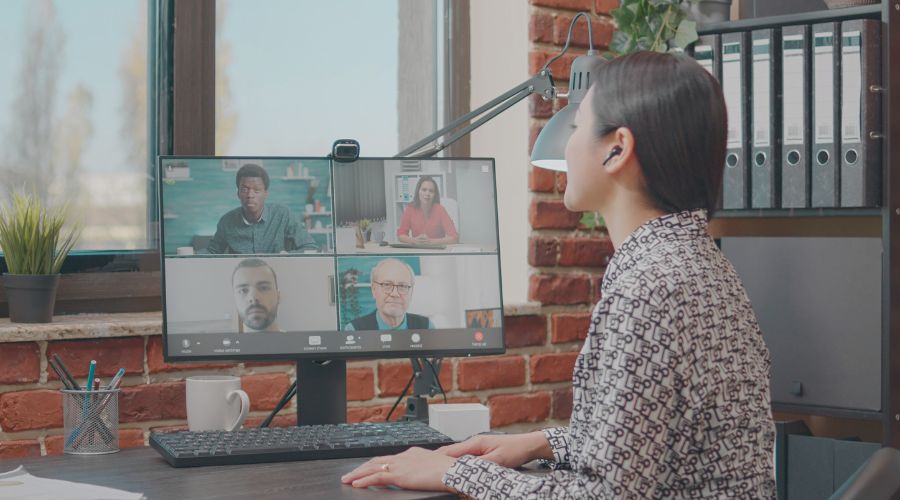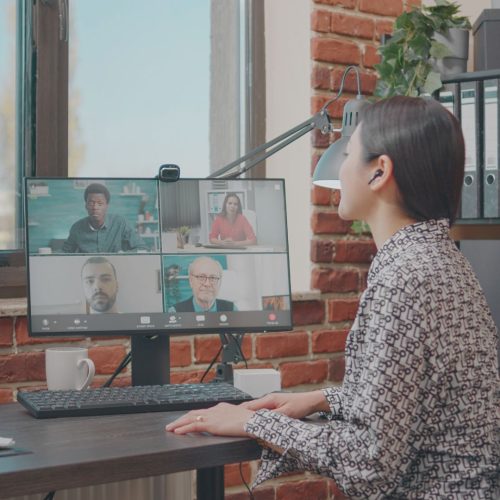Remote workplace solutions’ success depends on more than tools; rather, it requires mindful engagement and balance for distributed team productivity.

Image courtesy of https://www.freepik.com/
In the digital era, remote workplace environments are more popular. However, they face unique challenges, like employee engagement and wellness.
To address these, companies are now innovating with digital detox programs that promote mindfulness, thereby improving focus, and mental clarity, and reducing burnout for remote teams.
The Rise of Digital Detox in Remote Workplace Solutions
Since remote work has led to a surge in screen time, employees are constantly connected through multiple digital tools.
Over time, this constant connection can trigger burnout, stress, and lack of motivation, ultimately affecting productivity.
Therefore, digital detoxes offer a structured way to step back from screens, rejuvenate, and foster healthy engagement.
Furthermore, companies now prioritize digital detox to support a healthy work-life balance for their distributed teams.
Why Digital Detox Programs Matter in Remote Workplace Solutions
As digital detox programs allow remote teams to refresh, recover, and reset their focus, they become increasingly essential.
In fact, research shows that even short screen breaks can reduce stress levels and improve creativity.
By embracing these programs, companies acknowledge the impact of tech fatigue and offer practical solutions for their remote teams.
How Digital Detox Programs Support Mindfulness
Indeed, mindfulness—the practice of staying present—benefits greatly from integrating digital detox practices.
Since remote work environments blur the lines between home and work, there’s an increasing need for intentional breaks.
Digital detox programs, therefore, help employees detach, practice mindfulness, and regain balance amid continuous digital stimulation.
Methods of Encouraging Mindfulness through Digital Detox
To make digital detox effective, companies incorporate specific strategies, including:
- Scheduled Screen-Free Days: Team-wide screen-free days, in fact, encourage rest and focus on non-digital activities.
- Mindful Communication Windows: With dedicated times for communication, employees experience reduced constant messaging, which helps them focus better on tasks.
- Non-Work Chats and Hobbies: Providing spaces for casual connections boosts morale and prevents burnout while connecting team members.
Employees Needing Digital Balance
Distributed team members are increasingly seeking wellness-focused work environments that support mental health and balanced digital use.
Notably, many remote employees are millennials and Gen Z, generations known for valuing personal well-being and work-life balance.
Therefore, companies that prioritize digital detox meet these employees’ needs for wellness-oriented environments, creating a competitive advantage by showing genuine care for their workforce.
What Employees Want in Remote Workplace Solutions Mindfulness Programs
Mindful practices strongly align with remote employees’ desires for flexibility, mental wellness, and a balanced digital life.
Certainly, employees expect initiatives that respect personal time and recognize digital boundaries.
Thus, they value programs that offer structure, such as scheduled quiet hours, encouraging purposeful work while minimizing digital overwhelm.
Strategies for Building Effective Digital Detox Programs
A well-designed digital detox program doesn’t merely restrict screen time but enables mindful work habits.
Consequently, companies can build these programs by adopting clear, practical strategies that create lasting habits for employees.
Here are some methods to consider:
- Implement “Digital Quiet Hours”
Designate times when no digital communication occurs, thereby allowing focused work and minimizing interruptions. - Promote Outdoor Meetings and Walking Breaks
Encourage team members to take walking meetings or brief nature breaks, reinforcing the value of stepping away from screens. - Weekly Reflection Time
Set aside time for personal and team reflection, which allows employees to reconnect with their goals and progress without digital distractions. - Encourage Scheduled Tech-Free Zones
Create specific hours for employees to disconnect entirely from work-related tech, enabling genuine mental rest.
Real-Life Examples of Digital Detox Success
Successful digital detox programs showcase companies’ commitment to employee wellness and mindfulness.
For example, several forward-thinking companies implement these strategies, seeing positive impacts on both engagement and productivity.
- Shopify’s “No Meetings Wednesdays”: This program encourages employees to focus without digital interruptions, thereby increasing deep work and reducing burnout.
- Slack’s Email-Free Fridays: By dedicating one day weekly to non-email communication, Slack prioritizes employee wellness and reduces digital fatigue.
Balancing Productivity and Mindfulness in Remote Workplace Solutions
Mindfulness shouldn’t hinder productivity; instead, it enhances it by focusing on task quality over quantity.
In essence, digital detox programs offer employees the space to recharge, thus improving concentration and reducing errors.
By balancing productivity with mindfulness, remote teams can work more efficiently and feel more connected to their roles.
Creating a Culture of Mindfulness
Significantly, culture shifts toward mindfulness start with leaders who prioritize wellness, and modeling mindful behaviors.
As leadership openly participates in digital detox practices, they normalize screen breaks and encourage self-care within their teams.
Consequently, employees who see this behavior are more likely to follow suit, strengthening overall team mindfulness.
Benefits of Digital Detox for Distributed Teams in Remote Workplace Solutions
Investing in digital detox programs yields long-term benefits for distributed teams, ultimately affecting both personal and professional growth.
Certainly, mindfulness and digital detox lead to:
- Increased Creativity: Refreshing the mind, ultimately, leads to novel ideas and clearer thinking.
- Reduced Stress Levels: Taking breaks allows for better emotional regulation and thus less work-induced stress.
- Higher Job Satisfaction: Employees in wellness-focused environments report greater job fulfillment and engagement.
Practical Tips for Employees to Practice Digital Detox
Remote team members can also adopt small habits to experience the benefits of digital detox, even outside of formal programs.
Here are some quick tips:
- Set Personal “Tech-Free” Hours: Dedicate specific times to disconnect from work emails and notifications.
- Use Focus Timers: These tools encourage bursts of concentrated work with intentional breaks.
- Engage in Non-Digital Hobbies: Picking up a hobby away from screens can naturally reduce digital fatigue.
End Note: Embracing Mindfulness in the Remote Workplace Solutions
Ultimately, for remote job success, companies must balance productivity with employee well-being.
Indeed, mindfulness through digital detox aligns distributed teams, supports mental health, and improves work quality.
As companies adopt these innovative practices, they foster resilience, satisfaction, and longevity within their remote teams.







